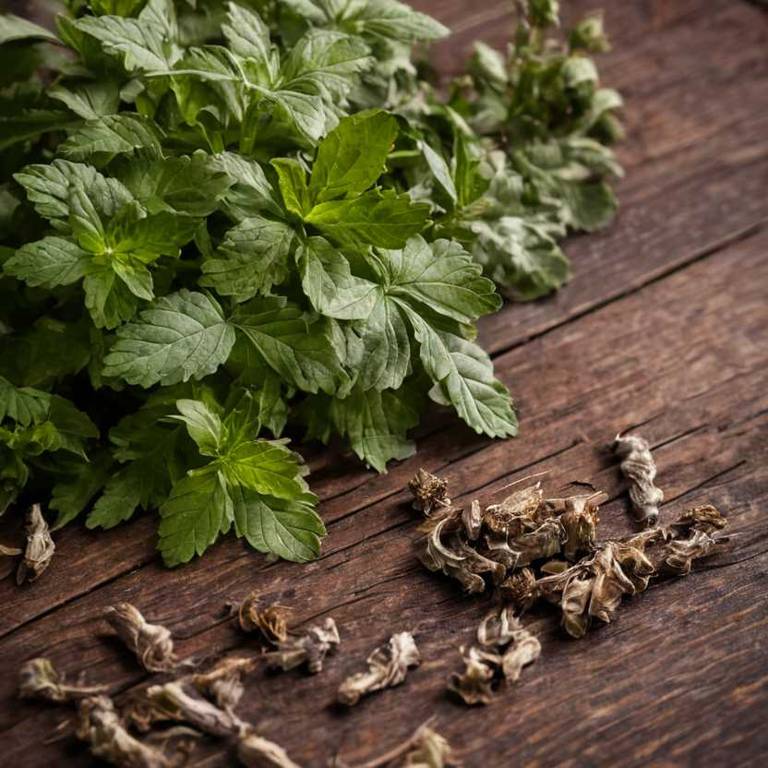By Leen Randell
Updated: Jul 06, 2024
What to know about Fagus sylvatica (beech) before using it medicinally

Fagus sylvatica, commonly known as beech, is a highly valued herb that has been prized for its medicinal and health-improving properties, particularly in reducing inflammation and improving cardiovascular health.
It is a versatile herb that is widely cultivated for its ornamental and edible properties, and is often used in landscaping and garden design due to its distinctive smooth bark and attractive foliage. From a botanical perspective, Fagus sylvatica is a deciduous tree that belongs to the family Fagaceae, characterized by its large leaves and conical shape.
In traditional medicine, Fagus sylvatica has been referenced in various cultures, including ancient Greek and Roman medicine, where it was used to treat a range of ailments, including fever, rheumatism, and digestive issues.
This article explains the medicinal, horticultural, botanical, and historical aspects of Fagus sylvatica.
What are the medicinal properties of Fagus sylvatica?
Fagus sylvatica helps with inflammation, cough, and sore throats. The bark and leaves are used to treat various ailments, including fever, rheumatism, and skin conditions. Its antimicrobial and antifungal properties make it a popular natural remedy.
The active constituents of Fagus sylvatica include salicin, terpenes, and flavonoids, which contribute to its medicinal properties. Salicin is a natural analgesic and anti-inflammatory compound, while terpenes have antimicrobial and antifungal effects.
The parts of the plant most used for medicinal purposes are the leaves and bark, which are rich in essential oils and tannins. The leaves are also used to make tea, which can be used to treat coughs, sore throats, and digestive issues.
Improper use of Fagus sylvatica can cause side effects such as allergic reactions, interactions with other medications, and gastrointestinal issues. Its salicin content can also cause stomach upset and bleeding in high doses.
When using Fagus sylvatica medicinally, it is essential to consult a healthcare professional and follow proper dosage guidelines. Pregnant and breastfeeding women should avoid using this plant, and individuals with kidney or liver problems should use it with caution.
What are the horticulural aspects of Fagus sylvatica?
Fagus sylvatica grow best in well-drained, slightly acidic soils and full sun to partial shade. They can tolerate a range of pH levels but perform best in slightly acidic to neutral soils with a pH between 6.0 and 7.0. They require consistent moisture, especially during their first year after planting.
When planting Fagus sylvatica, choose a location with good air circulation to prevent disease. Plant in early spring or fall, avoiding extreme weather conditions. Dig a hole twice as wide and as deep as the root ball, adding organic matter like compost or manure to improve soil fertility. Water thoroughly after planting and maintain consistent moisture levels.
Fagus sylvatica can be harvested for its leaves, bark, and seeds. Leaves can be harvested in the autumn, but avoid damaging the tree by not removing too many leaves at once. Bark can be harvested in the winter, typically after the leaves have fallen. Seeds can be collected in the fall, usually in October or November, when the seed capsules are mature and dry.
Fagus sylvatica is susceptible to pests and diseases like aphids, beech scale, and powdery mildew. Root rot and leaf spot can also affect the tree, particularly in areas with poor drainage. Regular monitoring and maintenance, such as pruning and watering, can help prevent these issues.
What are the botanical aspects of Fagus sylvatica?
Fagus sylvatica is a deciduous tree with a broad, columnar crown and smooth, gray bark. Leaves are simple, alternate, and elliptical, with entire margins and a rounded base. Petioles are 1-2 cm long.
Fagus sylvatica is a member of the Fagaceae family, order Fagales. It is a species of beech native to Europe and western Asia. It has two accepted subspecies: Fagus sylvatica var. sylvatica and Fagus sylvatica var. longipetiolata.
Several variants of Fagus sylvatica exist, including the white-beech (Fagus sylvatica var. alba), weeping beech (Fagus sylvatica 'Pendula'), and purple-leaved beech (Fagus sylvatica 'Purpurea'). These cultivars have varying leaf colors and growth habits.
Fagus sylvatica is widely distributed across Europe and western Asia, from the UK to Turkey. It grows in a variety of habitats, including woodlands, forests, and rocky outcrops. It has been introduced to North America, Africa, and Asia.
The life cycle of Fagus sylvatica begins with seed production, which typically occurs after 20-30 years. Seeds are wind-pollinated and germinate after 1-2 months. Seedlings grow into saplings within 1-5 years, reaching maturity in 50-100 years.
What are the historical aspects of Fagus sylvatica?
Fagus sylvatica is a tree with a rich history of use in various cultures. In ancient Europe, beech wood was highly valued for its durability and was used for making furniture, tools, and even ships. The wood was also used for charcoal and fuel.
In ancient Greek and Roman mythology, Fagus sylvatica was associated with the nymphs and the forest spirits. The tree was said to be inhabited by the nymphs, who were believed to be the guardians of the forest. The beech tree was also associated with the goddess Artemis.
The beech tree has been imbued with various symbolic meanings throughout history. In European folklore, the beech was associated with fertility, abundance, and protection. In some cultures, the beech tree was seen as a symbol of wisdom, strength, and longevity. In Japan, the beech tree is considered a sacred tree.
The ancient Greeks and Romans wrote about the beech tree in their historical texts. The Greek naturalist Theophrastus (c. 371-287 BCE) described the beech tree in his work "Enquiry into Plants". The Roman naturalist Pliny the Elder (23-79 CE) also wrote about the beech tree in his book "Naturalis Historia".
The historical use of Fagus sylvatica can be seen in ancient artifacts such as the shipwrecks found in the Baltic Sea, which were built using beech wood. The beech wood was also used to make furniture, such as the wooden chair found in the tomb of Tutankhamun.